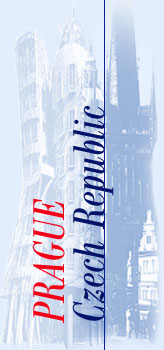MORAVIA AND SILESIA
The Czech Republic consists of three historic regions: Bohemia in the west, Moravia in the east, and Silesia in the north-east.
The main industrial, cultural and historical centre of Moravia is BRNO, the second biggest city in the Czech Republic, with a population of 390,000. In the past, Brno was the capital of the former Moravian Margraviate. The dominant feature of the city is the 13-th century Gothic castle Špilberk, later rebuilt as a chateau. In the 18th century, Špilberk was fortified, and a century later, it was turned into a prison. 80,000 people were imprisoned here during the Nazi occupation. In the centre of the city there is a well preserved Gothic Town Hall with a watchtower, as well as numerous Renaissance and Baroque palaces and churches. In the Capuchin Monastery there is a crypt with the mummified remains of monks. The 14-th century Augustinian Monastery once hosted composer Leoš Janáček, as well as J.G.Mendel, the first scientist to discover the laws of genetics. On Petrov Hill, overlooking the river, is the Cathedral of Sts.Peter and Paul, founded as a Romanesque basilica in the 11th century, and later rebuilt. The city also offers a number of theatres, galleries and museums. The Brno Exhibition Grounds are the venue for frequent international trade fairs. On the north-western outskirts of the city lies the Brno Dam Lake, the biggest recreational facility in the area.
JIHLAVA (pop. 52,800) is the centre of the Czech-Moravian Highlands. The royal mining town was established in the mid-13th century, near the local silver deposits. The heart of the town is a historic urban reserve. Its sloping main square is one of the largest in the Czech Republic. Other sights include the Gothic parish church founded around 1257, well-preserved fortifications and a Gothic gate, rebuilt in Renaissance style. The composer Gustav Mahler (1860-1911) spent his childhood in the town.
TELČ (pop. 7,200) is one of the most beautiful historic towns in the Czech Republic, listed as a landmark protected by the UNESCO. The original 12-th century village was extended in the 13th century, and became a fortress surrounded by fishponds and water moats. It has had the status of a town since 1258. Despite later additions, the centre of the town has preserved its medieval character. The historic square is lined with Gothic, Renaissance and Baroque town houses with richly decorated gables and arcades. Other highlights include a 16-th century Renaissance chateau, a Gothic church and remains of the original fortifications.
MIKULOV (pop. 7,700) is a town situated in picturesque surroundings on the slopes of the Pavlovské Hills, near the Czech-Austrian border. It is the centre of a wine-growing region, known mainly for its light white wines. The town was established below a Gothic castle in the 14th century. The castle was destroyed in 1945, and restored in the 1960s. Other sights include the historic town reserve, Gothic and Baroque churches and the old Jewish cemetery. In the vicinity of the town there are many private wine cellars, some of them decorated in the traditional folklore style.
OLOMOUC (pop. 106,100) is the cultural and historical centre of North Moravia. It has a castle built in 1055. The local bishopric was established in 1063. In 1306, Olomouc was the scene of dramatic events when the last member of the Přemyslid dynasty, Wenceslas III, was murdered here. Until 1641, Olomouc was the capital of Moravia. Later, Brno became more important. Olomouc University, now known as Palackého University, was founded in 1566, moved to Brno in 1778, and restored here in 1946. The main sights include the Town Hall, founded in 1378, St.Wenceslas Cathedral, built in 1109 and later refurbished, an 18th-century fortress, as well as many old town houses and churches of various styles. Olomouc has the status of a historic urban reserve. The town has three theatres and a symphony orchestra. It is an important railway junction, and an industrial centre, known also for its cheeses. The annual Flora Exhibition of plants takes place here.
OSTRAVA (pop. 327,000) is an industrial city in the Ostrava-Karviná coal basin located between North Moravia and Silesia, near the Polish border. It was founded in 1267, but it did not expand until 1782 when the local coal mining tradition began. Today, Ostrava is the country's leading centre of coal mining and metallurgy (Vítkovické Ironworks). It is also the seat of the Mining University. The city has several examples of old architecture: The Old Town Hall established in 1687, now serving as a museum, a Gothic parish church, and an interesting small wooden church dating back to the late 16th century. |

